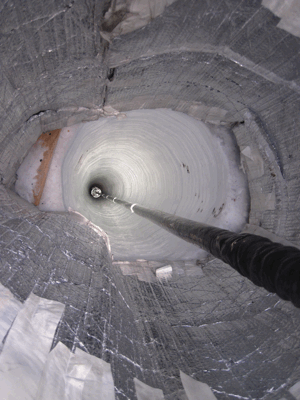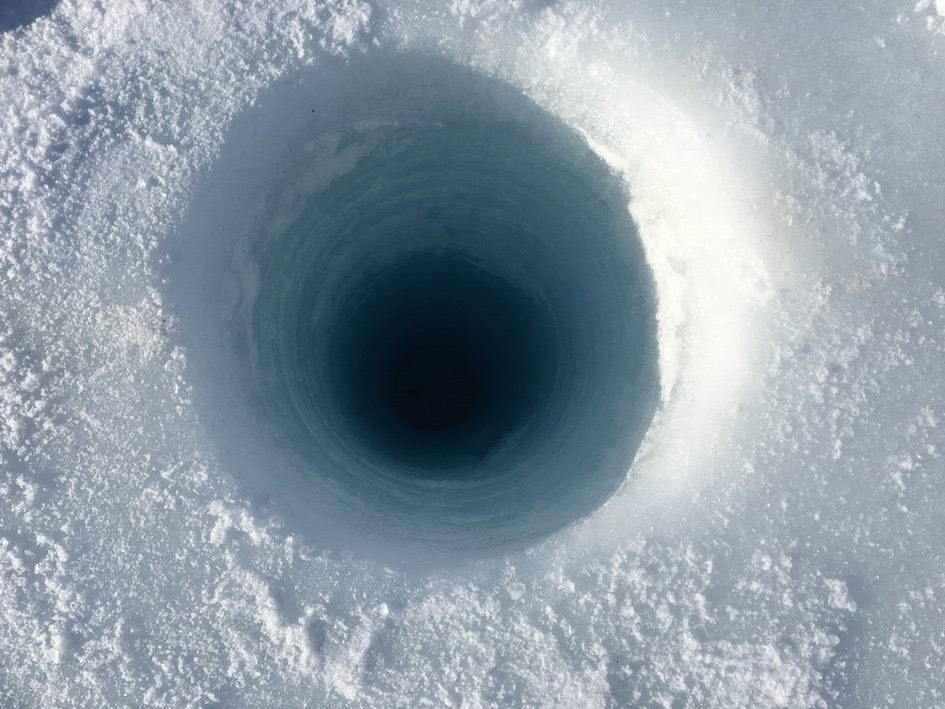A mysterious world was found in a cathedral-like cavern 1600 feet below the largest ice shelf in the Antarctic region.

Ice as far as the eye can see. Image credit: NIWA/Craig Stevens
To observe the melt rates around the Ross Ice Shelf – which is the largest ice shelf in the world – scientists from New Zealand with the National Institute of Water and Atmospheric Research (NIWA) melted through the ice shelf with a hot water hose where they suspected a river of meltwater in the ice.
While researchers have long suspected the presence of these hidden rivers beneath the ice sheets, what they have found has surpassed all their expectations.

The device that was used by the scientists to melt their way to the underwater river. Image credit: NIWA/Craig Stevens
The river was discovered hundreds of kilometers away from the edge of the Ross Ice Shelf, and it is thought to be a waterway from the sea. The team melted the ice as far as 1600 feet until they finally found it. They measured it to be 6,5 miles long, 300 yards wide, and 800 feet deep – almost the size of Sydney Harbor, but completely dark, and extremely cold. So, not the most hospitable environment, to say the least.
Nevertheless, when the scientists lowered a camera down into the cavity, they found swarms of small amphipods in the newly discovered river. These little creatures come from the same lineage as lobsters, crabs and mites, and their sheer numbers indicate that there’s an important ecosystem process happening down there.
“For a while, we thought something was wrong with the camera, but when the focus improved, we noticed a swarm of arthropods around 5mm in size,” said Craig Stevens, scientist in the Marine Physics Group at NIWA.

Small amphipods swarming around the camera. Image credit: NIWA/Craig Stevens
Even though the expedition set off to examine the effects of climate change, the scientific team has discovered something no one really expected to find there. This hidden environment is also a good example of how mysterious Antarctica really is, and how little we know about what’s under the massive sheets of ice.

.
.

.

.

.

.

.

.
.





